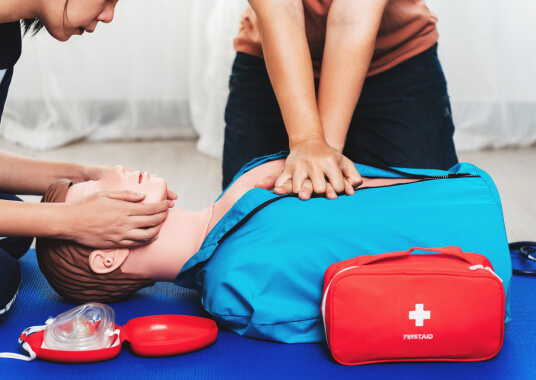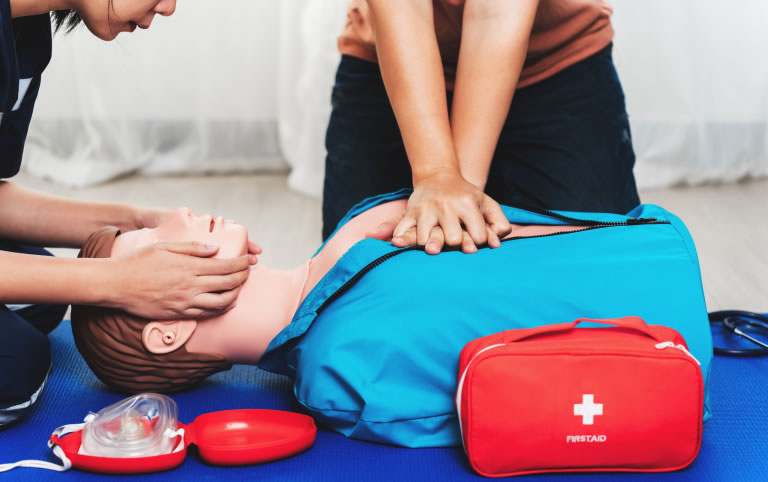Menu
Menu
CPR, First Aid, BLS, ACLS, PALS certifications.


First Aid is the primary medical care given to an ill or injured person until the paramedics arrive and take charge. The First Aid course we provide is easy to follow with video instructions. Join now for earning CE credit hours and a printable wallet card after passing the test.

$14.95 $24.90
| Chapters | CE Credits | Validity | Cost | Duration | ECC | Exam Attempts | Wallet Card |
|---|---|---|---|---|---|---|---|
| 13 | 2.0 | 2 Years | $14.95 | 1-2 Hrs | Compliant | Unlimited | Download/Print/Mail |
A choking emergency (considered to be a medical emergency) is when an obstruction (object or food) blocks the airway and prevents air from getting to the lungs. The person is not able to breathe normally or cough. This section covers adult and child choking emergencies.